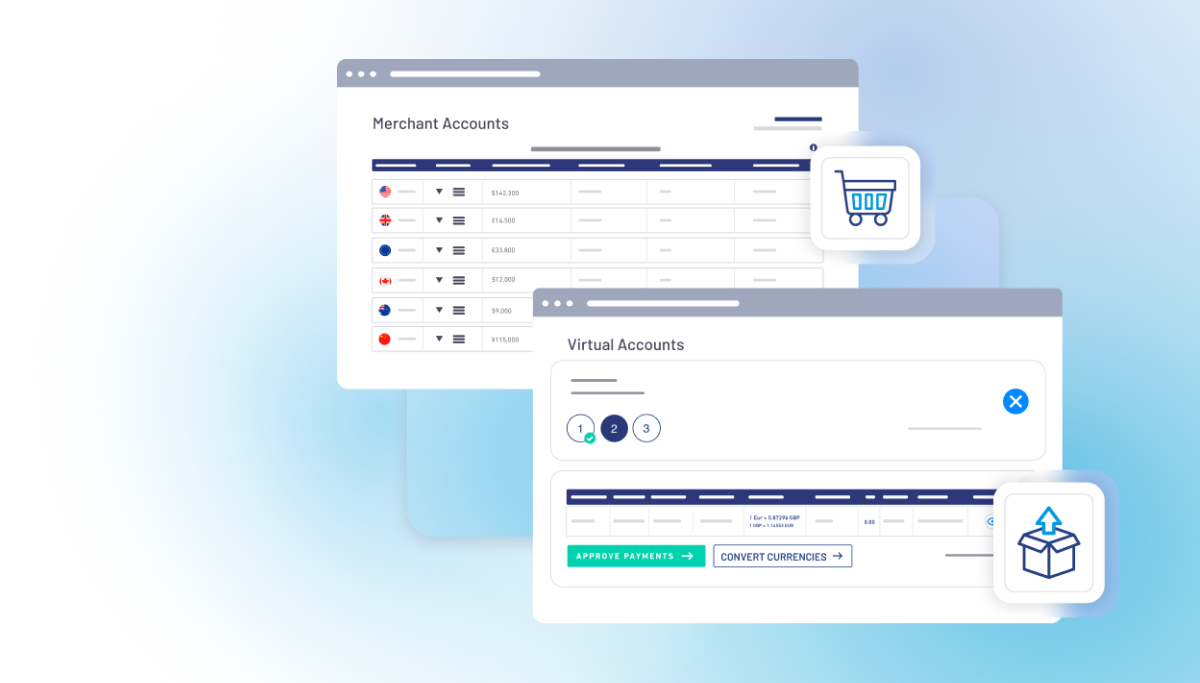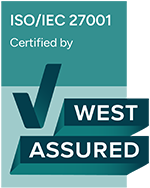A chain is only as strong as its weakest link and, when it comes to global supply chains, there are a lot of links – each one vulnerable to fraud.
With commodity prices rising significantly, a scarcity in many finished goods that have driven up their value, and the ever-increasing global nature of the supply chain means businesses are more at risk than ever. With increased rewards comes increased motivation, both from one-off fraudsters and criminal gangs.
So, how do you strengthen the links in your supply chain? Today, we’re looking at common types of supply chain fraud, how to detect them, and how to prevent them.
Common types of financial fraud in the global supply chain
From the simple to the complex, fraud along the supply chain is more common than you probably think. According to a recent Delloite survey of businesses, 30% of respondents had seen at least one instance of supply chain fraud in the previous year – and that was only the cases that were detected.
The typical supply chain frauds that you will see are:
Theft
Simple and straightforward, the ‘it fell off the back of a truck’ is still one of the most common ways businesses lose money along the supply chain. The theft can happen at any point along the line, including from within your business.
As you’d imagine, theft is particularly prevalent for products that are highly valued as consumables (electronics, clothes, etc.) that can either be used by the fraudsters themselves or converted into cash by reselling them.
Much of this theft is done by employees of the company themselves, or through collusion with an outside partner. One study found that 90% of all significant theft losses came from employees, while 60% of employees would steal if they knew they wouldn’t get caught.
Payment Fraud
With so many payments and paperwork (digital or physical) flying through the supply chain, it’s no surprise that people will try to manipulate the system. Billing schemes, authorized push payment fraud, Automated Clearing House (ACH) fraud, check payment fraud, expense fraud… these are all the names given to common tactics used by payment fraudsters.
For more information on common payment frauds and how to prevent them, click here.
Businesses often assume that any fraud will be picked up during the auditing process, but the truth is that scammers are smart and can use systems against themselves. According to the Association of Certified Fraud Examiners (ACFE), 44.7% of the fraud cases it surveyed were discovered through a tip or by accident, while only 39.2% of the fraud cases were discovered by internal audit, management review, account reconciliations, or document examination.
Bribery and Kickbacks
Bribery and kickback schemes are another common type of financial fraud in the supply chain, and often happen at more senior levels than we think. It can come in many forms, from simple bribes from a supplier to choose them over another, to kickback schemes which generally involve a supplier producing fraudulent invoices and an internal employee making sure they are paid and receive a ‘kickback’ for doing so.
When we think of kickback schemes, we often imagine the single executive working with a supplier on their own, but there are plenty of examples of institutional kickback schemes. Perdue Pharma – the makers of oxycontin – settled for $8.3 billion for ‘admitting to conspiring to defraud the US and violating anti-kickback laws in its distribution of the addictive painkillers’.
How to detect and prevent financial fraud in your supply chain

Detecting fraud in a supply chain can be broken down into three basic pillars – people, process, and technologies.
People
Systems don’t commit financial fraud, people do, so any anti-fraud system must put people at the heart of it.
1. Hiring practices
Getting the right people through the door in the first place is the first port of call. The ACFE found in 2018 that 40% of employees who steal from their work have experienced prior HR red flags.
But how can you reasonably screen a person against the possibility they will commit fraud during the interview process? It’s only through the careful checking of references and work history that employers can begin to tackle this problem, but there is no silver bullet.
2. Monitoring behavior
Once a person is in a position of authority, monitoring behavior can generate those early warning signs. Does the person rarely take holidays? Are they the only person in control of a supplier relationship, and are they loathe to give control to anyone else? Do they often work outside normal hours, making payments during that time? Do they have strangely close relationships to suppliers?
Human beings are naturally trusting, so it can be difficult to ask these questions of a colleague, but it is essential if you want to detect fraud early.
3. Training
A good anti-fraud program will always have a strong training element to it. You want to let employees know how to spot potential fraud, how to report it, and learn about the systems you have in place to prevent it.
The hidden truth behind fraud training programs is their inherent message to the potential fraudster that you are monitoring potential schemes, thereby discouraging them from starting their own.
It’s also important to give employees the psychological safety net that will allow them to report suspicious activity. Even if they turn out to be wrong, they should always be praised for taking what is often a brave step.
Process
A strong anti-fraud process is your best method in detecting, and preventing, fraud on an ongoing basis.
1. Double-blind monitoring
Any payments to external parties should be either double-checked by another human being, or the responsibility of those payments should rest with more than one person. Ideally, both of these tactics would be put in place.
It doesn’t mean you do double the work, just that you put in place regular checks and balances.
One-third of fraud cases occur because companies lack internal controls.
- Association of Certified Fraud Examiners, 2020
2. Regular audits and Risk Assessments
While auditors are not technically responsible for detecting fraud, a good auditor will monitor your incomings and outgoings with fraud in mind. You can also carry out regular internal audits where the finance team essentially checks each other’s work. It’s important to have these as just part of the routine, and not do ad-hoc audits when it comes to mind – this will erode trust.
Going that one step further would be to conduct risk assessments on your supply chain. This can range from identifying steps in the supply chain that could potentially break international sanctions, to looking at transactions that are either high value or high volume and therefore contain a lot of risk to the company.
3. Supplier Due Diligence
Apart from internal monitoring and detection, actively doing due diligence on suppliers and third parties you interact with (such as bidding partners) will help create a culture of compliance and fraud prevention.
You can even draw up supplier code of conduct policies they have to agree to in order to do business. This code of conduct can include anything from identifying potential conflicts of interest with any of your employees, to whether the suppliers own supply chain adheres to your company’s policies (such as child-labor laws and environmental practices). You can also insert a right-to-audit or right-to-inspect that allows you to audit transactions and make surprise inspections.
4. Have a fraud response plan
Once you detect fraud, what happens in your organization? Having a defined response plan, and reporting system, is the only way you’ll systematically tackle fraud on an ongoing basis. Knowing who has to be notified (up to and including the police) will mean steps won’t be missed and further reputational damage done down the line.
Technologies
Technologies, primarily using fraud detection algorithms and machine-learning tools, have become a key weapon in the fight against fraud.
1. Fraud detection systems
With so many transactions happening digitally today, it’s vitally important to have systems that can raise automatic red flags when they detect something wrong. From detecting when payment details are changed within a system to recognizing when payments are going through a sanctioned or high-risk country, automated detection will help you catch and prevent fraud early.
As Alex Clements, Global Head of FinCrime, Investigations & Monitoring at TransferMate, said in a recent interview, “We’ve invested heavily into our compliance monitoring systems and we’ve built controls to detect all kinds of risk scenarios. We are also ISO 27001 compliant, and our system includes customer authentication controls and dual-authorization controls.
2. Anti-money laundering detection
Beyond pure payments fraud, bad actors using your supply chain to launder money is a risk you need to be aware of, and technologies can help here too. Just like those automated red flags around payments (and there’s a lot of crossover with the two) you need a system that detects unusual activity that could indicate money laundering.
According to a 2017 Economist Intelligence Unit report, only 30% of supply chain executives were actively addressing corruption and bribery in their supply chain.
The things a system would look out for here include immediate withdrawals of money when paid into an account, a sudden surge of payments to a long dormant client or bank account, and any steps along the chain that involve high-risk countries or individuals.
3. Don’t assume the technologies are working
One of the inherent risks of technology is relying on it too heavily. Technology is built and used by humans, so is still vulnerable to fraud. It is too easy to implement a new technology and forget about the people and process pillars in your anti-fraud program.
It is through the combination of all three that you’ll have a real chance to detect, prevent and minimize fraud in your supply chain.
How to prevent financial fraud in the global supply chain
‘Removing fraud is a never ending task for global enterprises. The first principle is to remove opportunity, and this is done via touchless data processes and/or segregation of ownership.’ says Stephen Carter, Director of Product Marketing at Ivalua. ‘The second is to create a high risk environment that ‘shouts out’ you will be caught, and this is done via visibility robust auditing and tracking. The hardest to catch is collaborative fraud which can easily go undetected within a supply chain, and that’s where a seamless source to pay solution (S2P) comes in. The right S2P solution removes the opportunity, while making any fraud attempt visible to everyone’.
A strong anti-fraud program requires a holistic approach involving the pillars of people, process, and technology. By getting in the right people, training them and, yes, monitoring their activities, your business will be able to use carefully designed processes and newly available technologies to detect and prevent fraud.
While no chain is unbreakable, by using the right approach you can make every link as strong as possible.
To discover how TransferMate's technology can protect your supply chain against financial fraud, click here.







